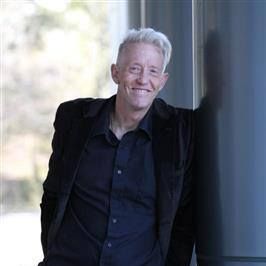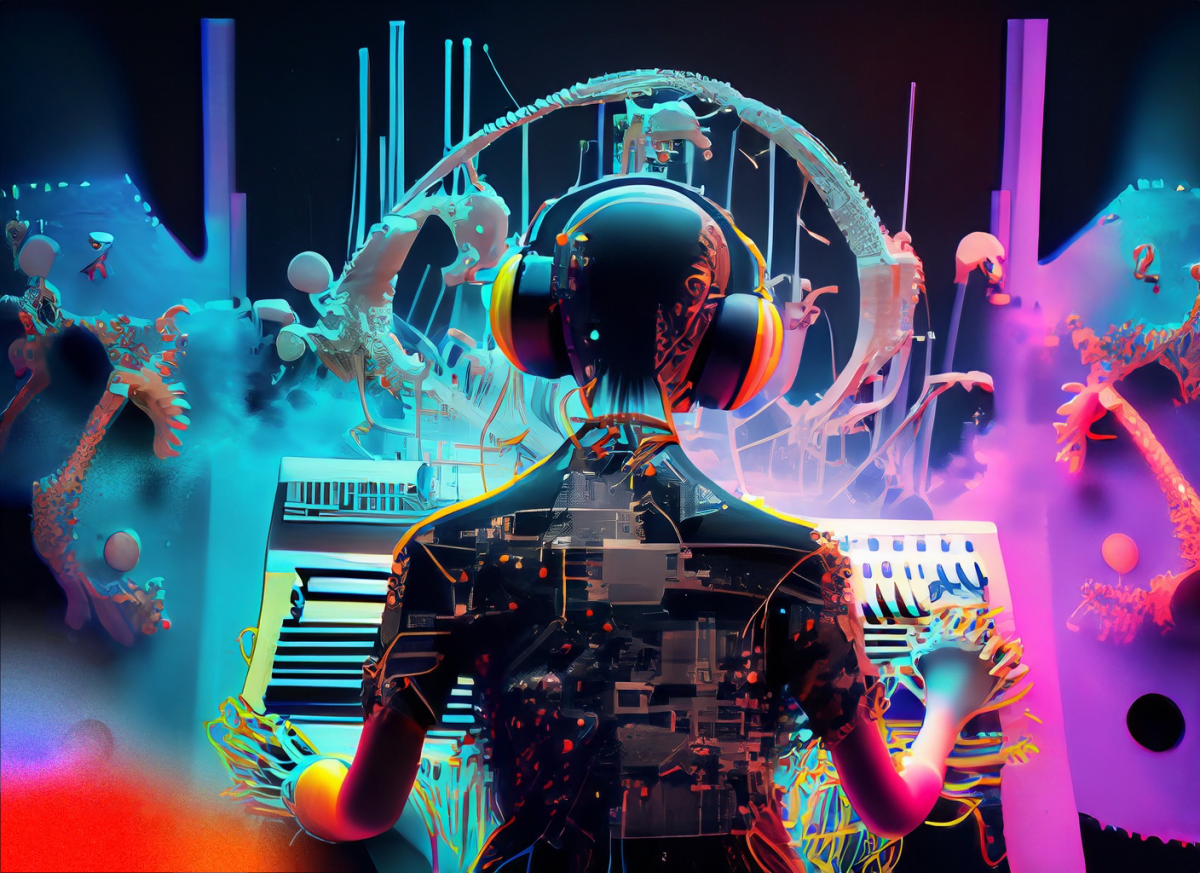Harmony in Algorithms: Exploring the Landscape of AI-Generated Music
In a world driven by technology and innovation, artificial intelligence (AI) is breaking new ground in the realm of creativity. AI-generated music is no longer a distant dream but a vivid reality. As we dive into the exciting world of AI-created music, we'll explore the technology behind it, its current state, and the implications for the music industry and society.
The Symphony of Code
AI-generated music is the harmonious blend of art and science. At its core, AI music composition involves complex algorithms and vast datasets. The algorithms, often based on neural networks, are trained on extensive music libraries, allowing them to analyze and understand the nuances of various musical genres, styles, and instruments.
These AI systems, such as OpenAI's MuseNet and Google's Magenta, have learned to mimic the intricate patterns of music. They can compose original pieces, imitate famous composers, or even create entirely new genres. The possibilities are endless, and AI-generated music is pushing the boundaries of human imagination.
Unleashing Creativity
One of the most remarkable aspects of AI-generated music is its ability to facilitate the creative process. Musicians and composers can use AI as a tool to spark new ideas and overcome creative blocks. They can provide the AI with a melody, a chord progression, or a theme, and the AI can generate complementary sections, harmonies, or even suggest instrument choices.
This collaboration between human and machine introduces a new dimension to music composition. It's like having an endlessly creative and knowledgeable companion in the studio, offering inspiration and unique ideas at any time.
The Music Industry's New Tune
AI-generated music is transforming the music industry in several ways. First, it has the potential to democratize music production. With AI tools, aspiring artists with limited resources can create high-quality music without the need for extensive training or expensive equipment.
Moreover, AI can assist in music curation and recommendation. Streaming platforms like Spotify and Apple Music are already using AI algorithms to suggest songs to listeners based on their preferences, listening history, and mood. This technology enhances user experience and helps artists reach a broader audience.
Challenges and Controversies
Despite the exciting prospects, AI-generated music also raises several challenges and controversies. One significant concern is the potential loss of human creativity and originality. Some argue that relying too heavily on AI may lead to a homogenized musical landscape, where individuality is sacrificed for mass appeal.
There are also copyright and ownership issues to consider. If AI generates a piece of music, who owns the rights to it? Is it the programmer, the AI system, or both? These legal gray areas are yet to be fully addressed.
The Quest for Emotion
One of the most critical frontiers in AI-generated music is imbuing it with emotion. While AI can create technically proficient compositions, capturing the depth of human emotion in music remains a challenge. Music often serves as a vessel for human experiences, stories, and emotions, and replicating this aspect is a complex task.
Research in this area continues to advance, with AI systems attempting to understand and mimic the emotional nuances of music. Achieving this could lead to AI-generated pieces that not only sound beautiful but also resonate on an emotional level.
Digital Doppelgangers: How Artists Are Creating AI Versions of Themselves
In an age where technology and creativity intersect, artists are venturing into uncharted territory by exploring the creation of AI versions of themselves. These digital doppelgangers are not mere replicas; they represent an exciting fusion of artistry and artificial intelligence. Let's delve into the possibilities, implications, and the future of artists embracing AI to create virtual versions of themselves.
The Birth of the Artist AI
The process of creating an AI version of an artist, often referred to as an "artist AI," begins with the collection of extensive data about the artist's work, style, and personality. This data includes everything from their entire discography, lyrics, artwork, interviews, and even their social media interactions. The goal is to capture every aspect of their creative identity.
Artificial Intelligence algorithms, particularly those based on natural language processing and generative modeling, are then employed to analyze and synthesize this data. The result is an AI model that can write lyrics, create music, paint, or even generate performances that mimic the artist's style.

Collaboration with the Digital Self
One of the most intriguing applications of artist AI is the potential for collaboration. Musicians, for example, can work hand-in-circuit with their digital doppelgangers. They can feed AI models with a simple melody or a theme, and watch as the AI composes a song that adheres to their distinctive style.
Visual artists can similarly collaborate with their AI counterparts to generate artworks, exploring new creative avenues and pushing the boundaries of their own artistic expression. This fusion of human creativity with AI's computational power can lead to breathtaking, innovative masterpieces.
Resurrecting Legends
Beyond collaboration, artist AI offers the possibility of resurrecting legends of the past. For instance, the late Tupac Shakur's holographic performance at the 2012 Coachella music festival showcased a rudimentary form of this technology. With further advancements, we may witness digital reincarnations of artists like Jimi Hendrix or Michael Jackson, performing new music or interacting with audiences in virtual reality.
This prospect, while exciting, also raises ethical questions about consent, authenticity, and the ownership of an artist's image and legacy. It's an ongoing debate as the line between art, entertainment, and technology continues to blur.
Unleashing Infinite Creativity
Artists who create AI versions of themselves open doors to boundless creativity. These digital doppelgangers can churn out music, visual art, or even literature tirelessly, without limitations. This means that the artistic legacy of creators can continue long after their physical presence on this earth.
AI versions of artists can also adapt to changing trends and evolve, making it easier to remain relevant in an ever-shifting artistic landscape. They can explore new genres, collaborate with emerging talents, and even engage with audiences through social media, maintaining the connection between artist and fan. Here is an original jazz-rock-pop composition I wrote called "The Taste Of Honey" recorded in Los Angeles with famous studio musicians but an AI-generated music video using Kaiber.
Challenges and the Human Touch
While the possibilities are thrilling, there are challenges to consider. Critics argue that excessive reliance on artist AI could dilute the authenticity and soul of art. The unpredictability, the deeply personal touch, and the vulnerabilities that human artists bring to their work are challenging to replicate.
Additionally, there's the concern of AI-driven art becoming formulaic. If artists rely too heavily on AI for creation, there's a risk that the art world could become saturated with homogenized, algorithmically generated content, diminishing the value of human-driven originality.
The creation of AI versions of artists is a paradigm-shifting concept that melds the creativity of humans with the computational power of artificial intelligence. It offers endless possibilities for collaboration, artistic exploration, and even the revival of legends. Yet, it also prompts essential conversations about authenticity, consent, and the evolving nature of creativity in the digital age.
As the art world continues to embrace this technology, finding the right balance between human touch and AI innovation becomes crucial. The future of artist AI is a compelling canvas where artists are not just creators but conductors of the harmonious interplay between humanity and technology. It's a world where the virtual and the real blur, and creativity knows no bounds. Download my original album The Future Is Calling.
Copyright Challenges in the Age of AI-Generated Music: Navigating the Digital Soundscape
AI-generated music is pushing the boundaries of creativity, but it also raises significant copyright issues. As artificial intelligence continues to play a more substantial role in music composition and production, the lines of ownership, originality, and intellectual property are becoming increasingly blurred. In this article, we'll explore the copyright challenges associated with AI-generated music and examine how they are impacting the music industry and artists alike.
The Issue of Authorship
Traditional copyright law is rooted in the concept of authorship. It grants exclusive rights to creators of original works, protecting their intellectual property. However, in the case of AI-generated music, determining the authorship of a piece becomes complex. Who should be recognized as the creator: the human programmer, the AI model, or both?
This fundamental question often lacks a straightforward answer, and it varies by jurisdiction. In some regions, copyright laws explicitly require human authorship, while others do not make such distinctions. This ambiguity can lead to disputes and legal challenges when it comes to AI-generated compositions.
The Role of the Programmer
In many cases, the human programmer plays a pivotal role in the creation of AI-generated music. They design and fine-tune the algorithms, provide the AI with training data, and make creative decisions that influence the final output. As a result, programmers argue that they should be considered co-authors of the AI-generated work.
However, this assertion also raises concerns about the potentially disproportionate recognition and financial gain of programmers compared to artists. It prompts questions about the fair distribution of royalties and creative ownership.
Ownership of Training Data
AI models learn from extensive datasets, including music libraries, compositions, and performances. The use of copyrighted music in training data could infringe on the rights of artists and composers. The question of whether using copyrighted material in AI training data constitutes fair use or copyright infringement is a topic of ongoing debate.
Clear guidelines and regulations regarding the usage of copyrighted material in training data are necessary to ensure that AI-generated music respects the rights of original creators.
Legal Precedents and Uncertainties
As the legal landscape evolves, several notable cases have already tested the waters of AI-generated music copyright. For example, in 2021, the song "Daddy's Car" by AI program AIVA was embroiled in a copyright dispute when it was used in a commercial without proper authorization. This case underscored the need for a clearer legal framework around AI-generated music.
Some legal experts argue that specific AI-generated compositions could potentially qualify for copyright protection, depending on the creative input of the programmer and the uniqueness of the output. Others argue that copyright should focus on protecting human-created elements within AI-generated music, such as lyrics or specific melodies.
The Path Forward
Addressing copyright challenges in AI-generated music requires a collaborative effort between legal experts, musicians, AI developers, and policymakers. There is a need for new legal frameworks that acknowledge the evolving nature of music creation in the digital age.
These frameworks should consider:
- Defining authorship in AI-generated music, taking into account the roles of both AI and humans.
- Clarifying the ownership of training data and the use of copyrighted material.
- Ensuring fair compensation for all parties involved in the creation of AI-generated music.
- Balancing copyright protection with the need for artistic innovation and collaboration.
The rise of AI-generated music presents exciting opportunities for creativity and innovation. However, it also brings forth complex copyright challenges that require careful consideration and regulation. Striking the right balance between protecting intellectual property and fostering artistic exploration is essential for the future of music in the digital soundscape.
Conclusion
AI-generated music is a testament to the boundless potential of technology. It has revolutionized music composition, offering creative assistance and democratizing the industry. However, it also raises questions about originality and emotional depth. As AI technology evolves, it's essential to strike a balance between human creativity and the possibilities of AI, ensuring that music remains a powerful expression of our shared humanity. The future of AI-generated music is a symphony of potential waiting to be explored, a landscape where the lines between human and machine artistry continue to blur, and the melodies of innovation play on. Click here to read all about how to create customized music playlists.


